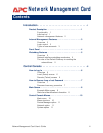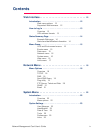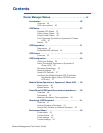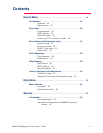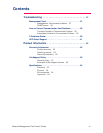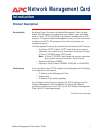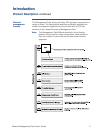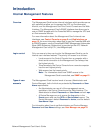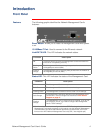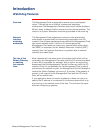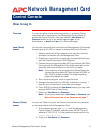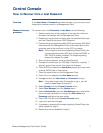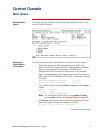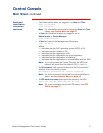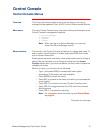
Network Management Card User’s Guide 3
Introduction
Internal Management Features
Overview
The Management Card has two internal interfaces which provide menus
with options that allow you to manage the UPS, an Environmental
Monitor, and the Management Card: the Control Console and the Web
Interface. The Management Card’s SNMP interface also allows you to
use an SNMP browser with the PowerNet MIB to manage the UPS and
an Environmental Monitor.
For more information about the Management Card’s internal user
interfaces, see Control Console on page 6 and Web Interface on
page 12; for more information about how to use the PowerNet MIB with
an SNMP browser, see the PowerNet® SNMP Management Information
Base (MIB) Reference Guide which is provided on the APC Network
Management Card utility CD (.\doc\Mibguide.pdf)
Login control
Only one user at a time can log into the Management Card to use its
internal user interface features. The priority for access is as follows:
• Local access to the Control Console from a computer with a
direct serial connection to the Management Card always has
the highest priority.
• Telnet access to the Control Console from a remote computer
has the next highest priority.
• Web access has the lowest priority.
Note: For information about how SNMP access to the
Management Card is controlled, see SNMP on page 21.
Types of user
accounts
The Management Card has two levels of access (Administrator and
Device Manager), both of which are protected by
Password
and
User
Name
requirements.
• An Administrator can use all of the management menus
available in the Control Console and the Web Interface. The
Administrator’s default
Password
and
User Name
are both
apc
.
• A Device Manager can only access the
Log
option in the
Events
menu and use the
UPS
and
Environment
menus. The
Device Manager’s default
Password
is
device
, and the default
User Name
is
apc
.
For information about how to set Administrator and Device Manager
Password
and
User Name
settings, see User Manager on page 23.




